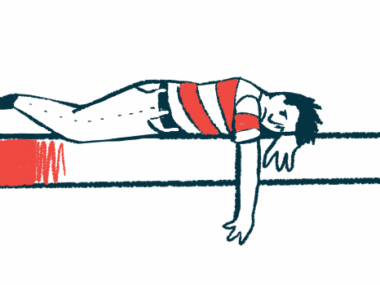Nearly all Prader-Willi syndrome patients hospitalized in childhood
Mortality rates in PWS higher than in Angelman syndrome
Written by |

Nearly all children with Prader-Willi syndrome (PWS) are hospitalized during their first year of life, a study reports.
Hospitalizations in early childhood are generally more common with PWS than Angleman syndrome, another rare genetic disorder, the study found. Mortality rates also were higher in PWS, and 6% of children with the condition die before age 10.
“The results of the study are of primary importance for parental counseling and clinical management of patients with either of these two rare genetic diseases,” researchers wrote in the study, “Health outcomes of children with Prader-Willi or Angelman syndromes: a European population-based multicentre study,” which was published in Archives of Disease in Childhood.
PWS is caused by mutations in a specific stretch of DNA in chromosome 15. Everyone inherits two copies of the chromosome, one from each parent, but in specific parts of the body, that DNA stretch is only active in one chromosome.
The disease occurs when there are problems with the paternal copy of the region. Angelman, meanwhile, is caused by mutations in the maternal copy of the same region. Both PWS and Angelman are marked by development abnormalities, though specific disease symptoms are different in each.
Since both are rare disorders, there’s generally a lack of data on the long-term health outcomes of children with these conditions.
Comparing outcomes in PWS, Angelman syndrome
Here, a team of international scientists analyzed data from several European registries to get an overview about how PWS and Angelman affect health outcomes for children. The analysis included outcomes from 150 children with PWS and 46 with Angelman. All were born between 1995 and 2014.
In the year after their birth, nearly all (99.5%) infants with PWS were hospitalized at least once. Most (86.2%) had at least one hospitalization that lasted 10 days or longer.
For children ages 1 to 4, 93.2% were hospitalized at least once, but their hospitalizations were generally much shorter; on average, patients of this age spent only about a day each year in hospital. For children with PWS ages 5 to 9, most (79.6%) were admitted to the hospital at some point, though the average time spent there decreased to half a day a year.
Hospitalization in early childhood were less common in children with Angelman syndrome, but were still frequent. More than half (59%) of Angelman patients were hospitalized in their first year. The hospitalization rate for Angelman patients was 95.3% for ages 1 to 4, but dropped to 68% at ages 5 to 9.
The uptick in hospitalizations in early childhood is likely attributable to symptoms such as seizures and behavioral abnormalities that tend to manifest around that age.
Surgeries were also more common in PWS than in Angelman, with 61.4% of PWS patients undergoing at least one surgery by age 4, but 31.4% of Angelman patients.
Survival data showed that 6% of the PWS patients died over the first 10 years of life, whereas no deaths before age 10 were reported for Angelman patients. None of the PWS deaths occurred in the first month after birth.
Although the survival statistics show that 94% of PWS patients survive childhood, the rate of childhood deaths in PWS remains high and, paired with the finding of frequent hospitalizations and surgeries, the data “underscore the considerable impact of this syndrome on patients’ lives,” the researchers said.






